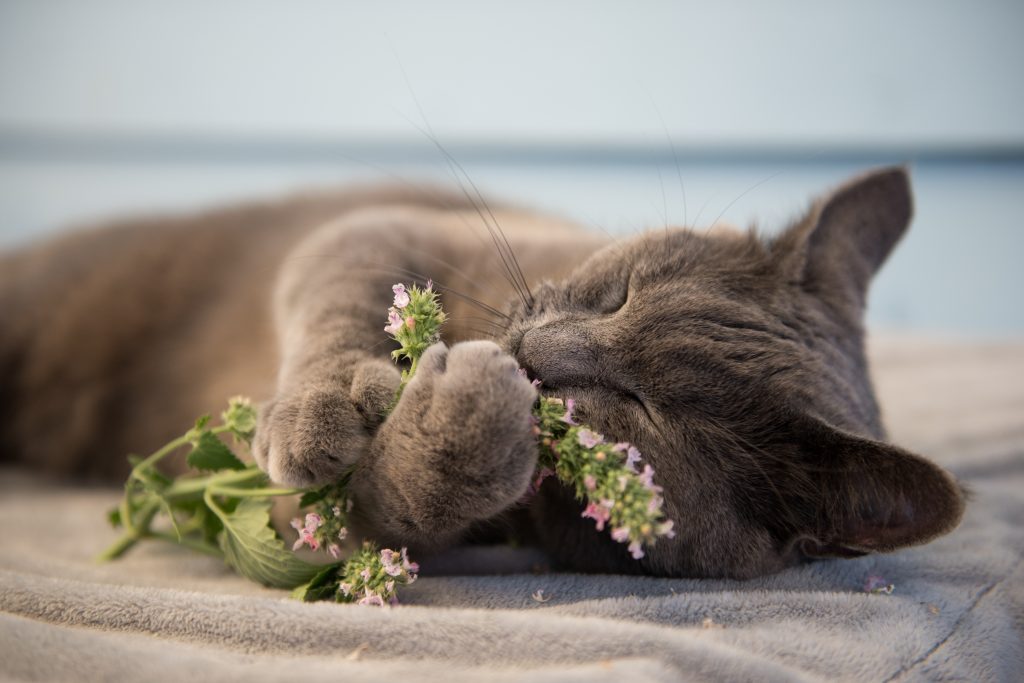Cats are fascinating creatures, but they can also be quite sensitive. As a species, they become stressed easily, which can lead to physical discomfort and even sore patches caused by excessive grooming. This is why it’s essential for cat owners to help their pets relax. One effective way to do this is by using catnip, a herb known for its calming effects on felines.
While catnip is generally safe for cats, it's important to be aware that too much can cause discomfort or pain. Although most of the time, a catnip overdose isn’t a serious concern, there are cases where it can be overwhelming. In such situations, seeing a veterinarian may be necessary. So, what are the signs that your cat has had too much catnip? Let’s dive deeper into this topic.
Catnip, or Nepeta cataria, is a member of the mint family, and its active ingredient, nepetalactone, is what attracts cats. It works by interacting with feline pheromones, producing feelings of euphoria. However, not all cats react the same way. Some may become hyperactive and playful, while others may feel calm and relaxed. Understanding how to manage your cat's exposure to catnip can help maintain their happiness and health.
What You Will Learn
- Cats can experience stress which may lead to physical discomfort.
- Catnip is a natural herb that can help cats relax, but it should be used in moderation.
- Signs of catnip overdose can include vomiting and hyperactivity.
- Understanding your cat's unique reaction to catnip can enhance their playtime and relaxation.
Understanding Catnip and Its Effects
Catnip is a perennial herb from the mint family, native to Eurasia but widely found in temperate regions across the globe. Its active ingredient, nepetalactone, is what draws cats to it. When cats smell catnip, they often exhibit behaviors like rolling, flipping, and rubbing against it. This reaction is due to the stimulation of their "happy" receptors in the brain.
Interestingly, the effects of catnip can vary based on how it is ingested. When sniffed, it can cause euphoric behavior, while consumption often has a calming effect. This means that catnip can serve different purposes depending on how you choose to present it to your feline friend.
Signs of Too Much Catnip
While catnip is generally safe, it’s essential to monitor how much your cat consumes. Signs that your cat may have had too much include vomiting, diarrhea, and excessive hyperactivity, also known as "the zoomies." If your cat demonstrates these symptoms after consuming catnip, it's important to remove the source and allow them to calm down.
Most cats are good at self-regulating their intake, meaning they will typically stop consuming catnip when they’ve had enough. However, if you notice persistent symptoms like vomiting or diarrhea, consult a veterinarian for further advice.
Optimal Catnip Usage
To ensure that catnip remains a beneficial addition to your cat’s life, it’s best to offer it in moderation. Experts recommend giving your cat access to catnip no more than one or two times a week. This helps prevent your cat from developing a tolerance, ensuring that they continue to enjoy its effects.
Using catnip during stressful situations or as a reward can also enhance its effectiveness. It can be a great tool to encourage play and exercise, promoting a healthier lifestyle for your furry friend.
Conclusion: The Balance of Catnip in Your Cat's Life
In summary, understanding how to use catnip safely and effectively can greatly enhance your cat's quality of life. While it's a wonderful way to help them relax and enjoy themselves, moderation is key. Always pay attention to your cat’s reactions and consult your veterinarian if you have any concerns about their health.
By being mindful of how you introduce catnip into your cat’s routine, you can help create a happier, healthier environment for them. Remember, a calm cat is a happy cat! So, take the time to observe and understand their needs, and enjoy the joyful moments that come with being a cat owner.
Remarkable Video Captures Burmese Python Consuming 77-Pound Deer In Florida
The Importance Of Food Safety: Recent Noodle Recall Highlights Major Allergen Concerns
Disturbing TikTok Trend Sparks Warnings Among Users


